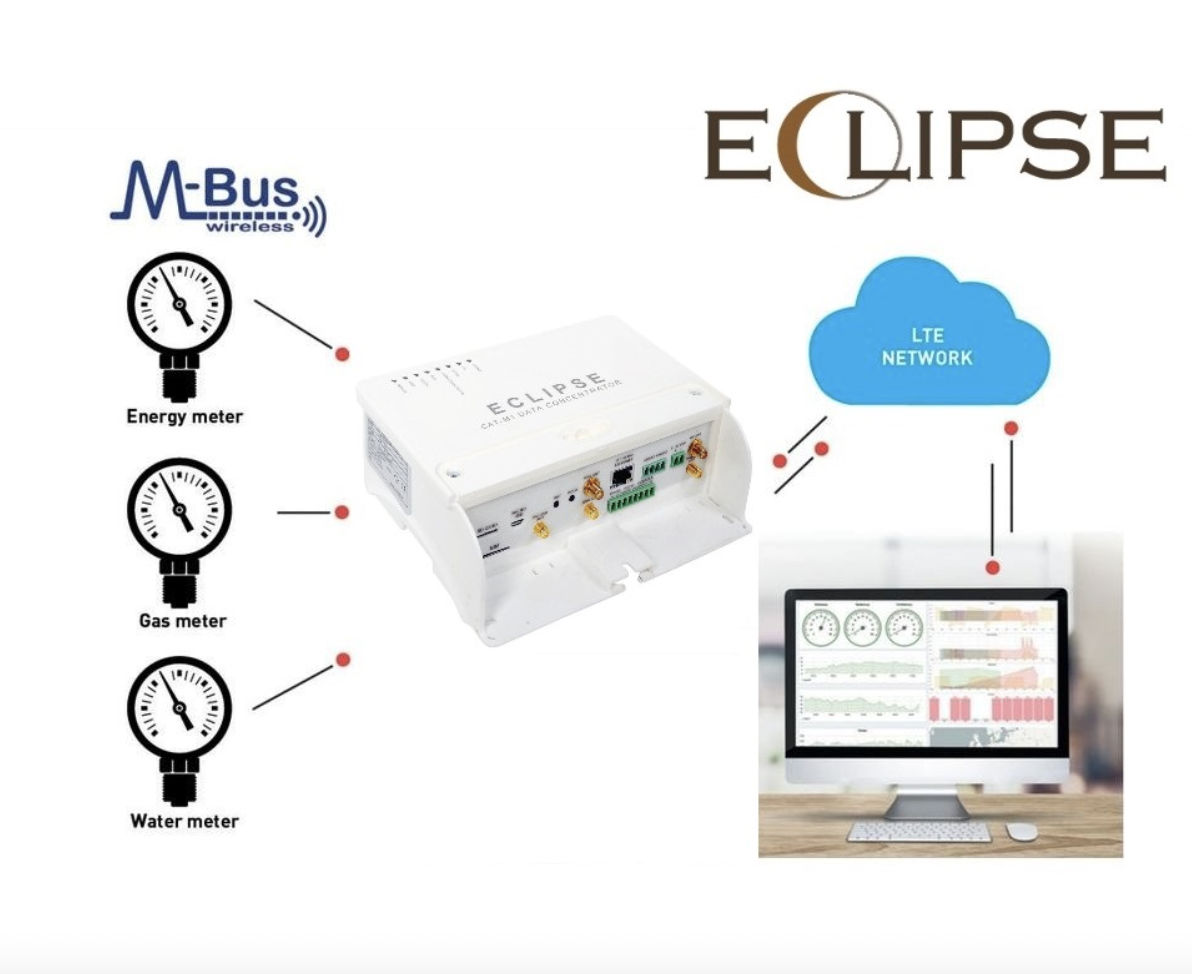Classical water, electricity, and gas meters are typically analog equipment that record utility consumption mechanically (spinning wheels) and must be noted on-site by an approved company meter reader employee. Nowadays, meters can be read real-time remotely, detect grid problems, and enhance the quality of energy monitoring. The employed technology is known as Advanced Metering Infrastructure (AMI).
Meter-Bus (M-Bus) is considered as a European communication protocol that permits to read many types of consumption and utility meters such as gas, heat water, and electricity rapidly and without errors based on the EN 13757 published by the European Committee for Standardization (CEN). This standard was introduced by Professor Horst Ziegler of the University of Paderborn with Texas Instruments Deutschland GmbH and Techem GmbH in the early 1990s.
M-Bus can be used in both household and industrial applications for alarms, lighting, and heating control. When queried, the m-bus electronic meters (individually addressable) deliver the utility data they have gathered to a common master that acts both as an embedded computer and a modem to read consumption data at periodic intervals then transmits them to service providers’ servers. This data collector and transmitter is called a gateway.
M-Bus protocol offers a data speed rate range from 300 to 9600 bits per second. Therefore, it can provide 19.2, 38.4, and 115.2 kilobits per second on shorter distances. M-Bus gateways offer a communication distance of 1 kilometer and supports a maximum distance of 350 meters between a slave and a repeater. This low-cost communication protocol provides high reliability and robustness and can connect a large number of potential nodes up to several hundred (250) slaves (consumption meters) with a single master. Hence, repeaters can be added to extend the range.
The M-Bus interface can employ a two-wire unshielded twisted pair telephone cable as a cable medium, optical fiber, or radio link that can operate in various unlicensed sub-GHz bands with either the 868 Megahertz or the 169 Megahertz ones. The protocol has a typical single-master bus architecture, in which the master requests and picks up the utility data from the slaves.
The wireless M-Bus (WM-Bus) solution fits many applications where standard wireless protocols fail such as ZigBee. The standard employs low frequency, offers simplicity in its implementation, greater penetrability, and long-range as well as low power consumption.
The wireless M-Bus version was extended in 2005 and represents a solid competitor to networks and protocols for the industrial internet of things (IIoT) such as LoRaWAN or Sigfox etc. This protocol offers many advantages such as sensor independence, battery longevity. The 169 Mhz band had been employed in Smart Metering applications. For example, the French gas distribution company, GrDF’s Gazpar project is considered one of the first 169Mhz smart metering applications.
To sum up, M-Bus gateways permit simple and low-cost implementations and offer a long battery life to transmit metering data from gas, heat, oil, or electricity meters to service providers’ servers.
M-Bus gateways act as translators and level converters to other commonly used internet of things (IoT) and industrial protocols such as IPv4, IPv6, UDP, CoAP, LwM2M and Non-IP DTLS, TCP MQTT and many other standards for automation applications.
Eclipse has many gateways and data concentrators that are based on the M-Bus standard. M-Bus gateways are recommended for one-to-one up to one to ten use cases where there are up to ten meters to be read per one gateway. For higher capacity processing, data concentrators are recommended.
Data concentrators facilitate a key technique to aggregate data from hundreds of field sensors into one single device. This allows them to process aggregate data, thereby reducing the cost of operation.
Eclipse Cat-M1 M-Bus Data Concentrator which is represented in Figure 1, constructs a seamless conversion and transmission platform between field devices through serial ports and remote servers throughout cellular networks. Cat-M1 data concentrator represents a transparent bridge between wireless M-Bus, wired M-Bus, Ethernet, and RS485 interfaces of both water meters, electricity meters, similar 3rd party devices and Head-End Systems. The storage capacity can be extended by industrial SD cards. The M-Bus data concentrator involves an embedded Linux operating system and high capacity SBC in order to achieve high capacity of data collection, processing and transmission. The Linux platform provides programmability and configuration adaptability. Eclipse Cat-M1 M-Bus Data Concentrator can read up to 256 meters over wired and wireless M-Bus.
With the over the air (OTA) protocol, updates, upgrades, and troubleshooting can be achieved successfully remotely without the need to go to the field. The data concentrator includes an integrated hardware watchdog feature to protect the device against hardware and firmware crashes.



